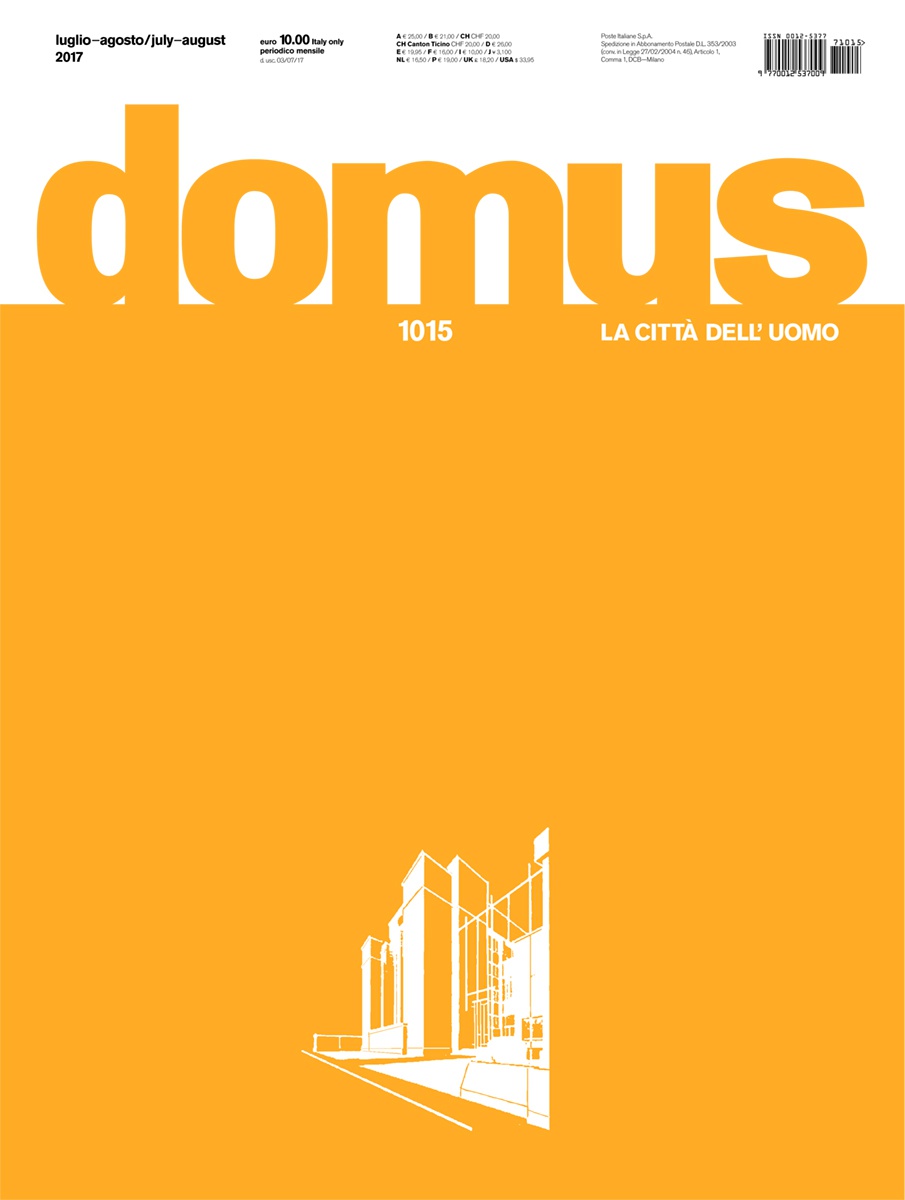Domus
August 2017
Text Niall McLaughlin Architects
Auckland Castle, the historic home of the prince-bishops of Durham, lies in Northeastern England. It is one of the most important and best-preserved bishops’ palaces in all Europe.
In 2012, it was taken over by the Auckland Castle Trust, a regional charity, and is now being transformed into a destination of international significance for faith, art and heritage. In addition to the restoration of the 900-year-old Auckland Castle and the creation of a adjoining Faith Museum supported by National Lottery players through the Heritage Lottery Fund (HLF), the Trust is also developing a reimagined 17th-century walled garden, the Mining Art Gallery, the Spanish Gallery and a welcome building nearby.
Níall McLaughlin Architects were commissioned to design two parts of the scheme: The Welcome Building (a new ticketing and information centre with a viewing tower) and in collaboration with the firm Purcell UK, a new extension to the existing Scotland Wing of the Grade I listed castle, containing the Faith Museum. The extension of the Scotland Wing, also supported by the HLF, will house a permanent museum of faith in the British Isles from prehistory to the modern day, as well as an art storage space. The extension is located adjacent to the historic site of the castle’s old grange.
Referencing the site’s history, we looked toward the mediaeval tithe barn as a building type to create the character of the new building. The building type is secular, but we wanted to communicate a heightened sense of the sacred to reflect the museum’s contents. With reference to Roman basilica, stone chapels in Ireland and Ise shrines in Japan, key details were developed to enhance the form of this simple barn to represent its sacred function.
Auckland Castle is approached from Bishop Auckland Market Place. The site for the Welcome Building provides a spatial connection between the carriageway of the castle complex and the Market Place itself.
The building consists of a long hall reminiscent of a market hall, and a tower offering views out over the castle, the town, and the parkland that flanks it. The Welcome Building is decorated with ornate shutters, ceiling paintings and wall engravings. The base will bear text describing the history of the site. The shutters on the first floor open to display heraldic panels illustrating the development of the landscape over time. The ceilings of the hall are adorned with stencilled representations. Construction on both buildings is now underway.
Architecture contains fantasies about the past and the future; fictions and semblances of other times. Skeuomorphs are representations of older forms that are retained to allow us to make sense of the new. Sacred architecture often carries forward older construction elements that have acquired symbolic significance over time. It uses them in new arrangements and materials. We are interested in buildings that tell parables about what they are for. The buildings we have designed at Auckland Castle will take their place among the remnants, ruins and absences created by 1,000 years of continuous building and destruction. At the outset of the project, we studied paintings, drawings and texts about the site to understand the many layers of fictions employed over time to embody the changing meaning of the site. The new buildings for the castle speak about their own inner necessities, but also contain representations of the site’s history, from the ancient Roman fort to the modern tourist attraction.
The buildings are part of a museum that tells the story of religious faith from early times to the present day, and they borrow motifs and details associated with sacred architecture. For example, the stone extension to the castle has projecting side walls like the earliest Christian churches, to which a pronaos was added to connote religious significance. The stone finials above the gable are skeuomorphs of tied timber rafters that have been used from Japan to Ireland to indicate the presence of a deity. By extending this tradition, we hope to address the way buildings are at once actual and fictional, and represent both themselves and ourselves in time.
